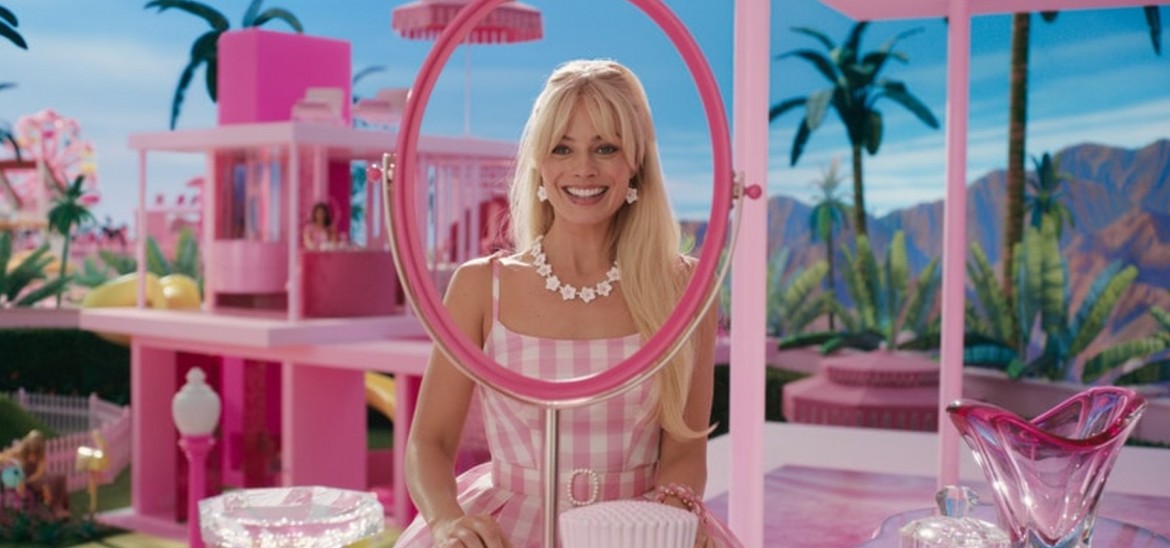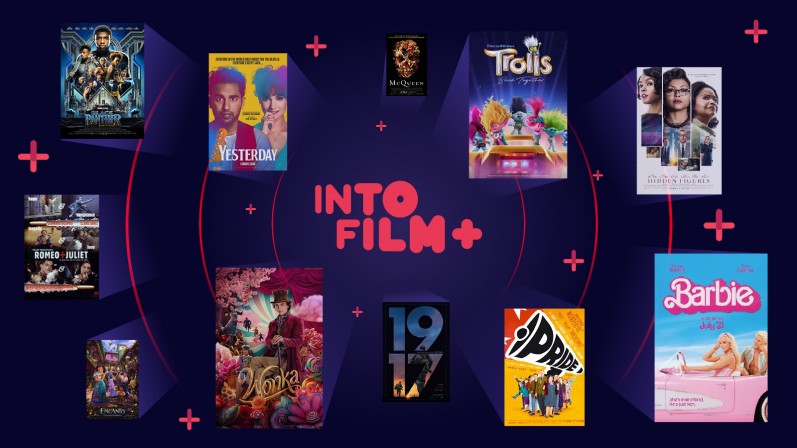Into Film Clubs
Find out everything you need to know about starting an Into Film Club.



One of the joys of watching a film is getting drawn into its world, whether it's a lavish historical reconstruction or a surreal alternate universe. The art of creating the visual environment of a film is known as set design. A film that has taken building an immersive setting for its story to a whole new level is Barbie and so, in celebration of the title arriving on Into Film+, we take a closer look at set design, the British professionals who are leading the way in this field, and how young people can apply their creativity to work in the film industry.
Directed by Greta Gerwig, Barbie is a satirical comedy that follows the adventures of the iconic toy woman as she confronts the confusing realities of life. A large part of the film takes place in an imaginary space called ‘Barbieland' - a perfectly pink kingdom inhabited by real-life Barbie and Ken dolls. Its aesthetic, as Gerwig calls it, is one of authentic artificiality. Everything, from the houses, the streets and even the food, is brightly coloured and shiny looking, as if the filmmakers want us to know they are made of plastic or are cardboard cut-outs. And yet it feels believable and tangible, like an invitation to use our imagination to fully live inside the fantasy , proving that a film set needn't be completely realistic to feel real and exciting.
Film set design draws on the traditions of theatre staging, and it's by looking back at the history of cinema as it evolved from that artform that young filmmakers can find ideas for inventive visual storytelling. Gerwig was greatly inspired by the elaborate sets built on sound stages for early Hollywood musicals, such as that of The Wizard of Oz, in which a yellow brick road (it's pink in Barbie!) leads off into a beautifully painted landscape. Another source of inspiration was the scene in Singin' in The Rain in which the protagonists dance in a minimalist empty space of ethereal pink - echoed in the ‘I'm Just Ken' dance-off. In Barbie, the Dreamhouse is very much a replica of the doll's accessory. There are no walls and stairs, just pillars and a spiral slide, so you can look straight through the house. This set design is also a nod to Rear Window, where being able to peer through the built-up architecture within the film's world is key to the plot. These films, also available on Into Film+, are excellent examples of classic Hollywood set design and show how cinema echoes itself visually, making use of familiarity in new images.
Set design also involves drawing on references from the real world in order to invent a new one. To create the world of Barbie, British set designer Sarah Greenwood and set decorator Katie Spencer explored the aesthetics of toys. The proportions of Barbieland reflect this: some objects are overly big, such as Barbie's hairbrush and toothbrush, while the house is not quite life-size, but scaled down by 23%. Greenwood and Spencer explain that the skewed sizes make the actors look like dolls, because their environment feels toy-like. The production team used very little CGI (computer generated imagery) to create Barbieland. All the household items, furniture and fake palm trees that you see on screen are hand-made by artists, craftspeople and set dressers. With so much attention to detail, this approach to set design presents exciting avenues for hands-on young people looking to apply their creative and DIY skills within the film industry.
That is how Barbie's production design duo Greenwood and Spencer got started in the industry. Their previous collaborations showcase the range of different approaches that can be taken to build the vivid spaces where films take place. For Sherlock Holmes, they re-created from scratch the gritty, industrial aesthetic of Victorian London using CGI, working from 19th century records of what the city looked like. For Atonement, rather than building an entire set from the ground up, they looked for ways to adapt an existing country estate with extra props and touches of colour to suit the film's story. Barbieland was constructed in Warner Bros Studios in Hertfordshire, outside London. With the UK film industry booming, many big budget productions look to this country not only for its screen talent or shooting locations, but also for its wealth of skilled and knowledgeable behind-the-scenes makers who can create convincing settings that bring stories to life.
Young people with a passion for film and an aptitude for design and craft may wish to explore career possibilities in set design and other art department roles. Key skills for a set designer include drawing, being good at visualising scenes, modelmaking, understanding colour schemes, and a curiosity for small details in interior design and architecture. Films such as The Grand Budapest Hotel, winner of Academy Award for Best Production Design in 2014 and available to watch on Into Film+ Premium, offer interesting case studies on how a film's set design can even become a kind of character in itself - with almost as much pink paint and wallpaper as Barbie .
For more information and to get inspired, explore our ScreenWorks resource which includes a practical set design activity that learners can complete as a taster into the job role, and explore our Careers in the Screen Industries pages.
Viewing 4 of 4 related items.

Find out more about our streaming service, designed specifically for UK schools.